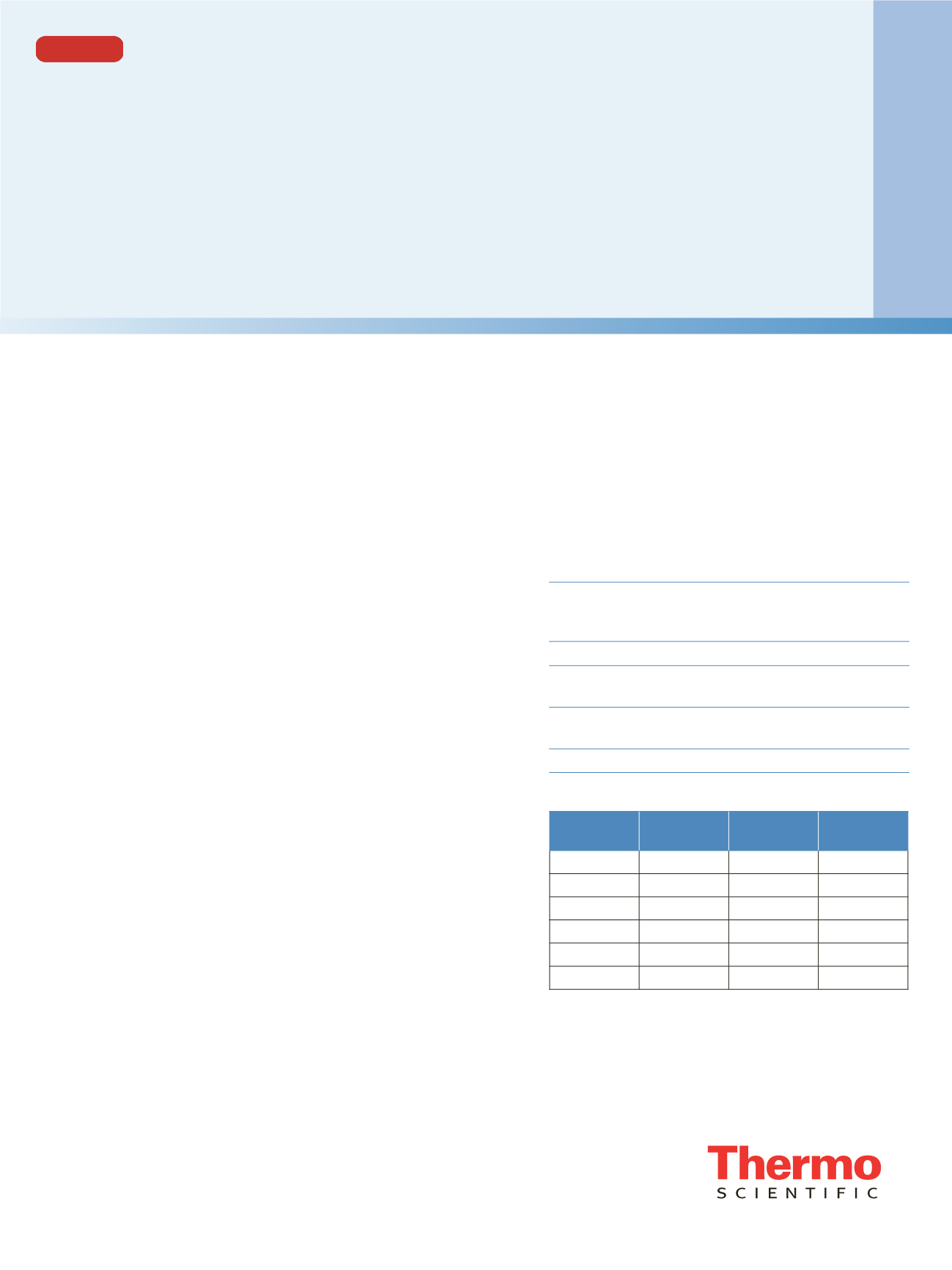

Quantitative Analysis of Immunosuppressants
in Dried Blood Spots Using the TSQ Endura
Triple Quadrupole MS for Research
Pavel Aronov
1
, Katerina Sadilkova
2
, Jane Dickerson
2
, Marta Kozak
1
1
Thermo Fisher Scientific, San Jose, CA;
2
Seattle Children‘s Hospital, Seattle, WA
Application Note
603
Key Words
Immunosuppressant drugs, dried blood spots, TSQ Endura
Goal
To develop a rapid, sensitive, selective, and cost effective LC-MS/MS
research method to determine the concentrations of cyclosporine A,
tacrolimus, and sirolimus in dried blood spots down to 3 mm size.
Introduction
Immunosuppressants (IMS) have narrow therapeutic
margins and thus have to be monitored routinely. Dried
blood spots (DBS) on paper become a desirable method of
sample collection because they can be collected in the field
and shipped for analysis with minimal transportation
safety requirements. Normally, 8 mm dried blood spots
are used; however, reducing their size to 3 mm offers
advantages in both minimizing sample volume sevenfold
and automating sample preparation because standard size
office paper punchers can be used to cut the dried blood
spots. Sample reduction inevitably leads to a need for
sensitive LC-MS/MS assays. In this application note,
IMS in dried blood spots were analyzed using the
Thermo Scientific ™ TSQ Endura ™ triple quadrupole mass spectrometer.Methods
Sample Preparation
A stock internal standard (IS) solution in acetonitrile was
prepared by spiking ascomycin (AsC), sirolimus-d
3
(d
3
-SrL),
and cyclosporin D (CsD) to a final concentration of 6 ng/mL
(AsC and CsD) and 30 ng/mL (d
3
-SrL).
A working IS solution was obtained by mixing two parts
of the stock IS solution and one part of 0.01 M zinc
sulfate in water to a final concentration of AsC, CsD, and
d
3
-SrL of 4, 4, and 20 ng/mL, respectively. Working IS
solution was stored at 4 °C for 3 months.
Discs were punched from the DBS cards with an 8 mm
punch into 2 mL microcentrifuge tubes. Then, 150 μL of
working IS solution containing 0.01 M ZnSO
4
was added,
ensuring that the entire spot was completely saturated.
Tubes were vortex mixed gently for 3 sec and centrifuged
at 15,700 rcf for 3 min. The sample was then mixed for
20 min. The supernatant was immediately transferred to
autosampler vials, further diluted sevenfold with 66%
acentonitrile in water to emulate 3 mm DBS, and 20 μL
were injected into the LC-MS/MS system.
Liquid Chromatography
System:
Thermo Scientific ™ Dionex ™ UltiMate ™ HPG3400-RS pump, UltiMate WPS-3000 autosampler, UltiMate TDS-3000 column compartmentColumn:
Proprietary
Mobile phase A: 10 mM ammonium formate/0.1% formic acid in
water (Fisher Chemical
™
brand)
Mobile phase B: 10 mM ammonium formate/0.1% formic acid in
methanol (Fisher Chemical brand)
LC gradient:
Refer to Table 1
Table 1. Chromatographic gradient
Retention
time (min)
Flow
(mL/min)
% B
1
0.00
0.500
30
2
0.25
0.500
30
3
0.50
0.500
100
4
1.50
0.500
100
5
1.51
0.750
30
6
2.00
0.750
30



















